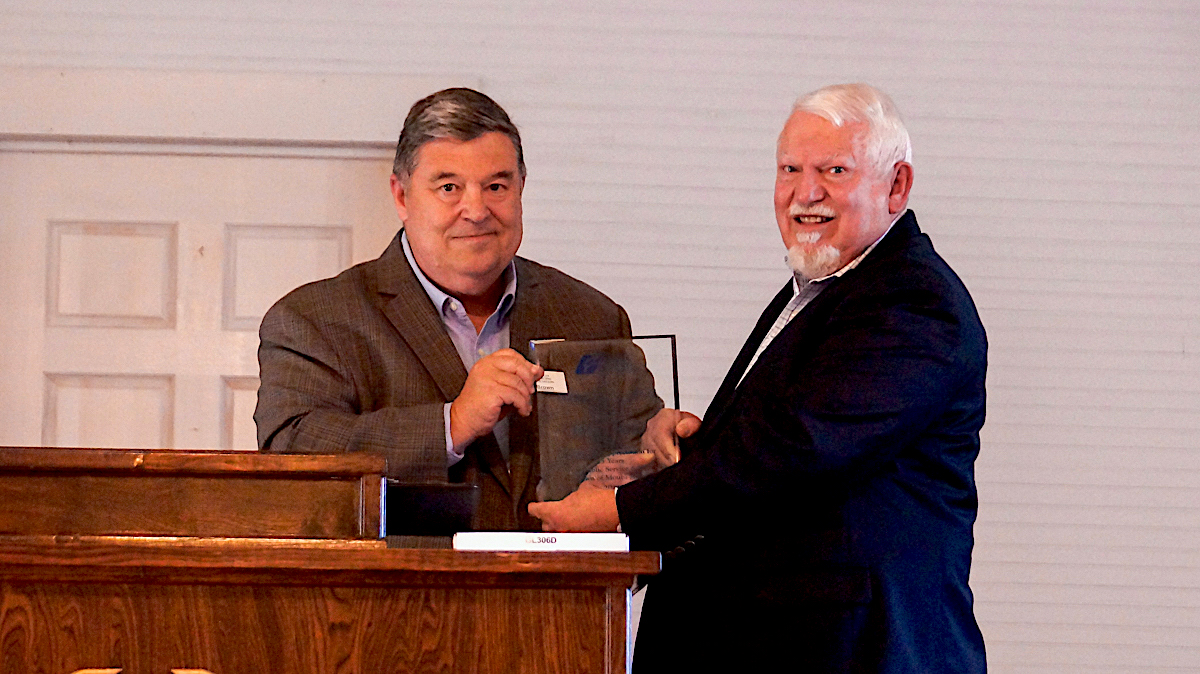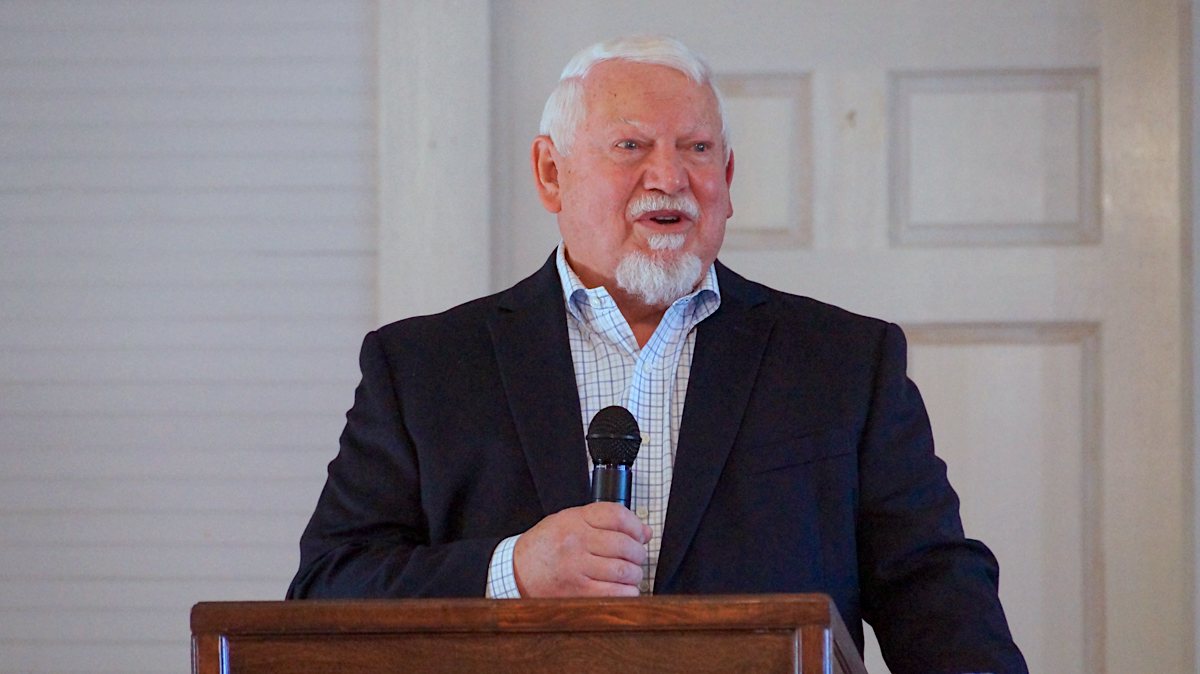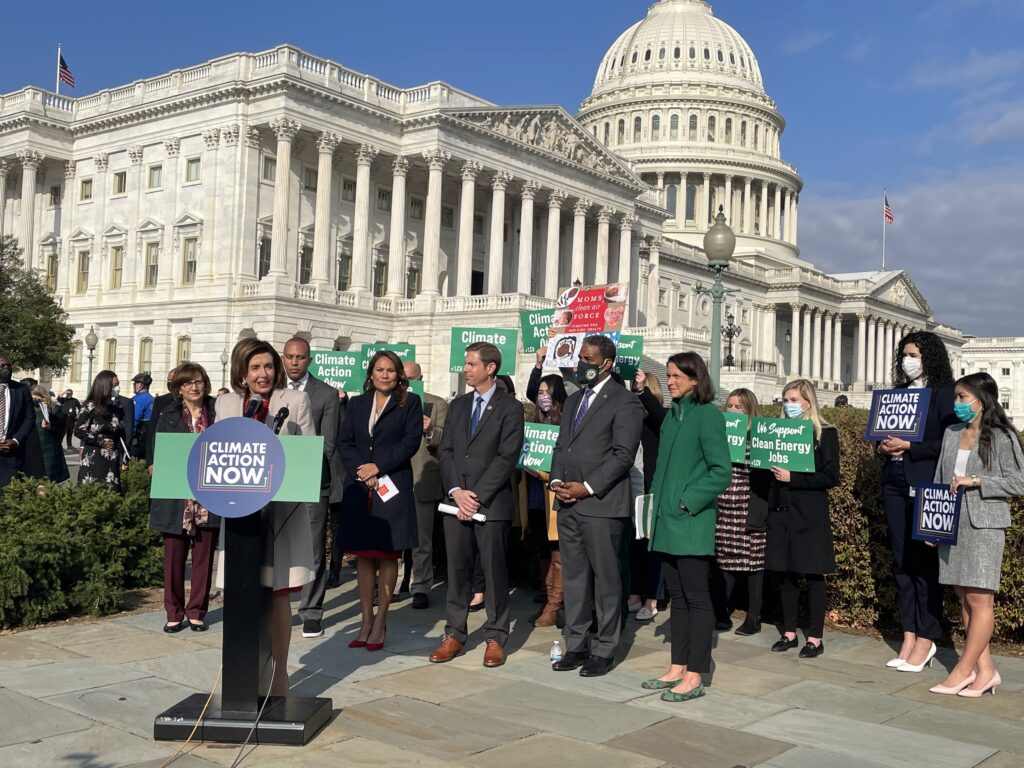WASHINGTON (GA Recorder) — U.S. House Democrats united around a landmark $1.85 trillion social spending and climate bill on Friday, sending the major plank of President Joe Biden’s economic agenda to the Senate.
Democratic leaders in the House heralded the 220-213 near party-line vote on the so-called Build Back Better bill, touting its provisions on child care, education, health care, taxes and the environment as monumental policy advances—though they are expected to be revised or removed to gain support from Democratic moderates in the Senate.
The lone House Democratic holdout was Maine’s Rep. Jared Golden.
In a statement, Biden touted the bill’s provisions on prescription drugs, universal child care, taxes and climate action.
“Above all, it puts us on the path to build our economy back better than before by rebuilding the backbone of America: working people and the middle class,” he said.
Senate Majority Leader Chuck Schumer said Build Back Better would be considered as soon as the parliamentarian has completed a review.
“We will act as quickly as possible to get this bill to President Biden’s desk,” the New York Democrat said in a statement.
Democrats’ triumphant moment on the eve of the Thanksgiving Day recess was delayed by an all-night filibuster-style speech by House Republican Leader Kevin McCarthy, who took the floor at 8:38 p.m. Thursday and spoke until 5:10 a.m. McCarthy railed against the cost of the legislation, President Joe Biden, inflation, and China, and veered into topics such as baby carrots, swimming competitions and the dollar menu at McDonald’s.
As a House leader, McCarthy was allowed to speak as long as he wanted—and his eight hours and 32 minutes beat an eight-hour record set by House Speaker Nancy Pelosi in 2018 advocating for immigration reform.
He told Democrats that he had “all night,” to which Democrats responded, “so do we.”
Walking into the U.S. Capitol early Friday morning, Pelosi said she had “no idea” what McCarthy achieved with his filibuster-style speech, according to Capitol Hill pool reports.
“With the passage of the Build Back Better act, we, the Democratic Congress, are taking our place in the long and honorable heritage of our democracy with legislation that will be the pillar of health and financial security in America,” Pelosi said on the House floor shortly before lawmakers voted. As the final tally was announced, Democrats cheered and applauded.
They huddled around Pelosi, chanting her name and clapping.
Friday’s win for House Democrats followed months of intense negotiations with the White House and Senate, infighting between progressive and moderate Democrats and a dramatic scaling back of an even more sprawling social safety net plan from Biden earlier this year. But they finally coalesced.
“Our nation has weathered unbelievable challenges in the past two years, navigating a global pandemic which upended our economy,” said Rep. Lucy McBath, a Marietta Democrat. “The Build Back Better Act will set us on a course to create millions of jobs, get Americans back to work, lower health care costs, and provide tax cuts to hard-working families.”
Georgia’s Republican House members were ready with mocking names for the legislation soon after it passed. U.S. Rep. Barry Loudermilk, a Cartersville Republican, dubbed it a “tax big and spend bigger bill. Pooler Republican Buddy Carter went with “Build Back Broke.” And Rep. Andrew Clyde, an Athens Republican, mocked it as the “Biden, Bernie Bankruptcy Act.
The legislation was held up two weeks ago when moderates insisted on seeing detailed impartial cost estimates for the legislation from the Congressional Budget Office before they could vote in favor of it.
But by Thursday, almost all the moderates had fallen in line, including Reps. Stephanie Murphy of Florida, Josh Gottheimer of New Jersey, Kurt Schrader of Oregon, Elissa Slotkin of Michigan and Abigail Spanberger of Virginia.
Golden, though, voted no, objecting to a provision that gives a tax break to high-earners in high-tax states.
The legislation now faces a tough and lengthy path — and some likely changes — in the evenly divided Senate, where Democrats will need every vote in their caucus for the measure to reach Biden’s desk.
The Senate will use a legislative procedure known as budget reconciliation, which allows Democrats to bypass the Senate’s normal 60-vote threshold and pass the measure without any Republican support.
Moderate Sens. Joe Manchin III, (D-W.Va.), and Kyrsten Sinema, (D-Ariz.), are expected to have an outsized influence on which provisions remain in the final bill. Both were heavily involved in months of negotiations that cut the measure’s initial $3.5 trillion price tag over 10 years in half.
If congressional Democrats can successfully clear the measure through both chambers, it would give them a second major legislative win after the $1.2 trillion infrastructure measure signed into law this week.
House Republicans opposing the social spending package decried it as too expensive and harmful to the economy.
“This bill should be called the ‘Bad Bad Bad’ bill,” said Rep. Tom Cole, an Oklahoman who is the top GOP legislator on the House Rules Committee, in another Republican quip that played on the bill’s “Build Back Better” moniker.
“It’s a wishlist of radical policy provisions and reckless spending that would lead to massive tax increases, trillions added to the national debt, and more and more government control of our lives,” Cole added.
The Biden administration has argued the bill will pay for itself through tax increases on the wealthy, big corporations and companies doing business abroad.
An analysis from the Congressional Budget Office released Thursday night projected that the bill would add $367 billion to the deficit over a decade.
The bill would remove the cap on federal deductions taxpayers can take for what they pay in state and local taxes, essentially a tax cut for the wealthy in high-tax states including New Jersey and Maryland—drawing opposition from Golden.
The CBO deficit estimate doesn’t account for possible revenue from increased IRS enforcement, which CBO analysts projected at $207 billion in savings and the Treasury has said could save some $400 billion.
Child care, universal pre-K
Among the bill’s sweeping policy provisions are significant changes to how parents pay for child care.
It allocates $400 billion to pay for universal pre-K for 3-and-4 year-olds and would provide subsidies to limit how much of a family’s income goes toward daycare costs for younger children.
It also expands the child tax credit so that parents could get a maximum of $3,600 per child under 6, for another year. Under the 2021 tax credit, parents can get up to $300 a month per child age 6 and under and $250 per child ages 6 to 17.
For new parents and other caregivers, Build Back Better includes four weeks of paid leave — a scaled-down provision that’s unlikely to survive in the Senate due to objections from Manchin.
On health care, it would for the first time give Medicare the ability to negotiate with pharmaceutical companies on the price of some prescription drugs and offer coverage of hearing aids for seniors.
It also would address the insurance coverage gap for those living in states that refused to expand Medicaid eligibility under the Affordable Care Act, by offering tax credits for premium-free health coverage on the Obamacare health exchanges through 2025.
Battling climate change
Progressive Democrats and environmental groups consider the bill a much stronger climate measure than the $1.2 trillion bipartisan infrastructure law.
Even as the bill’s topline price tag was halved, most of the climate spending remained. The White House has said the measure includes $555 billion in climate spending and tax credits.
The largest category of climate action in the bill is $320 billion in new and extended clean energy tax credits.
The bill would provide a consumer tax credit for electric vehicles. Emissions from transportation make up nearly one-quarter of greenhouse gas emissions in the U.S., the largest of any single sector.
The bill also includes funding for a new climate conservation corps program that would create entry-level jobs in conservation and climate resiliency work. Sen. Michael Bennet and Rep. Joe Neguse, both Colorado Democrats, have championed the climate jobs program.
The bill would also make changes to oil and gas development. It would increase royalty rates and end noncompetitive leasing for energy companies operating on federal lands and establish royalties for hard rock mining.
It would also impose a fee on emissions from methane, one of the most powerful greenhouse gases. Methane is largely a byproduct of oil and gas development, agriculture and landfills.
The bill is likely to cut more than a gigaton of greenhouse gas emissions, Robbie Orvis, the senior director of energy policy design at the nonprofit think tank Energy Innovation, said in an interview last month. The United States must cut 2 gigatons of emissions to reach its commitment under the Paris Climate Agreement.
Immigration attempts
Included in the $1.85 trillion social package is $100 billion that the Biden administration set aside for immigration policy that would help reduce backlogs, expand legal representation and help with processing at the border.
Democrats have tried to include a pathway to citizenship for millions of undocumented people through the reconciliation package but were blocked by the Senate parliamentarian from including those provisions.
Immigration advocates also spent this week lobbying Congress to include basic work permits for undocumented essential workers, as well as protections from deportations.
Georgia Recorder Editor John McCosh contributed to this report.




















